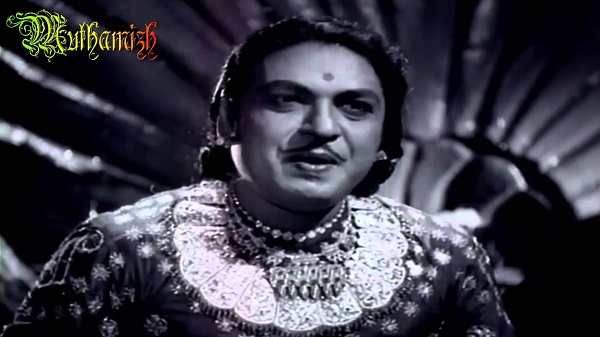P. U. Chinnappa, one of the stalwarts of early Tamil cinema, left an indelible mark on the industry with his unique blend of acting and singing. Born in 1916 in the town of Pudukottai in Tamil Nadu, Chinnappa’s rise to fame was swift and impactful, particularly around the year 1936, which marked a significant turning point in his career and in the history of Tamil cinema.
Early Life and Entry into Cinema
Before delving into the pivotal year of 1936, it is essential to understand Chinnappa’s background. He came from a family that appreciated traditional arts, which naturally drew him towards music and theater from a young age. His early exposure to classical music and stage performances laid the foundation for his future career in films.
Chinnappa’s journey into cinema began with his involvement in the stage, particularly with the famous drama company of T. K. S. Brothers, where he honed his skills as an actor and a singer. His commanding voice and emotive acting quickly gained him popularity, paving the way for his transition to the silver screen.
The Year 1936: A Pivotal Moment
The year 1936 was particularly significant for P. U. Chinnappa as it marked his first major break in Tamil cinema. This year saw the release of the film “Sati Sulochana,” which is often credited as one of the milestones in his career.
“Sati Sulochana” was a mythological drama that required a strong actor who could also sing, fitting Chinnappa’s profile perfectly. His portrayal of the character and his melodious singing captivated audiences, making the film a substantial success. This success was not just a personal triumph for Chinnappa but also a landmark in Tamil cinema, as it showcased the potential of integrating powerful singing performances with compelling acting.
Rise to Stardom
Following the success of “Sati Sulochana,” Chinnappa’s career took an upward trajectory. His ability to draw audiences through both his acting and singing made him a sought-after actor in the Tamil film industry. In the late 1930s and early 1940s, he continued to star in a series of successful films that solidified his status as one of the leading actors of the era.
Some of his notable films during this period include “Uthama Puthiran” (1940) and “Kannagi” (1942). In “Uthama Puthiran,” Chinnappa played dual roles, showcasing his versatility and earning critical acclaim. “Kannagi,” based on the Tamil epic “Silappatikaram,” was another significant film that highlighted his ability to bring classic Tamil literature to life on screen.
Musical Contributions
Chinnappa’s contributions to Tamil cinema were not limited to his acting. As a trained classical singer, he brought a unique musical dimension to his films. His songs often became hits, and his singing style influenced many future playback singers. The songs from his films were widely appreciated and played a crucial role in the success of the movies.
His voice had a certain resonance and clarity that endeared him to the masses, and he was known for his ability to convey deep emotion through his singing. This dual talent set a precedent in Tamil cinema, where actors were often expected to sing their own songs, a trend that continued for many years.
Challenges and Legacy
Despite his immense popularity, Chinnappa’s career was not without challenges. The competitive nature of the film industry and the rise of other stars meant that he had to continually prove his mettle. Nonetheless, his contributions during the late 1930s and early 1940s laid a strong foundation for Tamil cinema.
P. U. Chinnappa passed away prematurely in 1951, but his legacy endures. He is remembered as one of the pioneers who helped shape the Tamil film industry during its formative years. His ability to seamlessly blend acting and singing set a high standard for future generations.
Conclusion
The year 1936 was indeed a turning point in P. U. Chinnappa’s illustrious career. With the release of “Sati Sulochana,” he not only gained significant recognition but also contributed to the evolving landscape of Tamil cinema. His talent, versatility, and dedication to his craft left a lasting impact, ensuring that he remains a revered figure in the history of Indian cinema.

